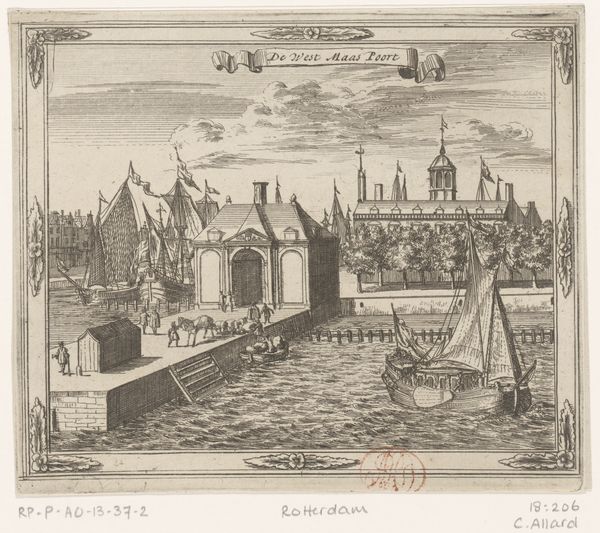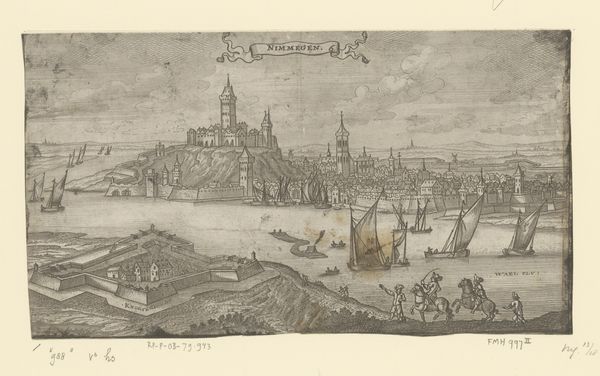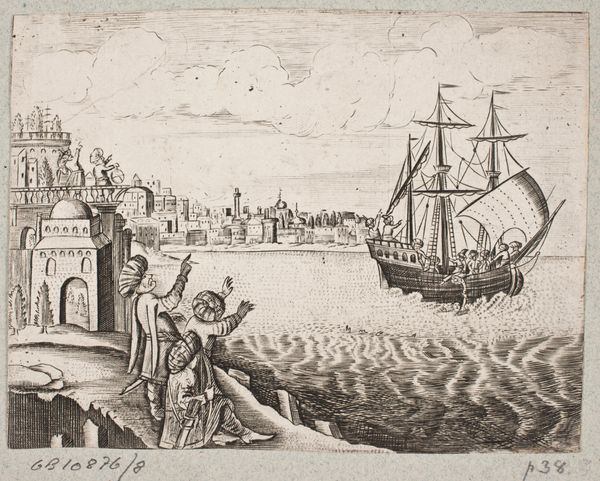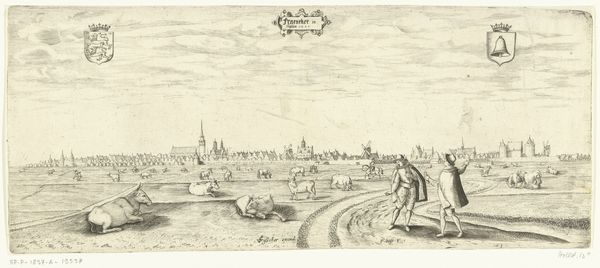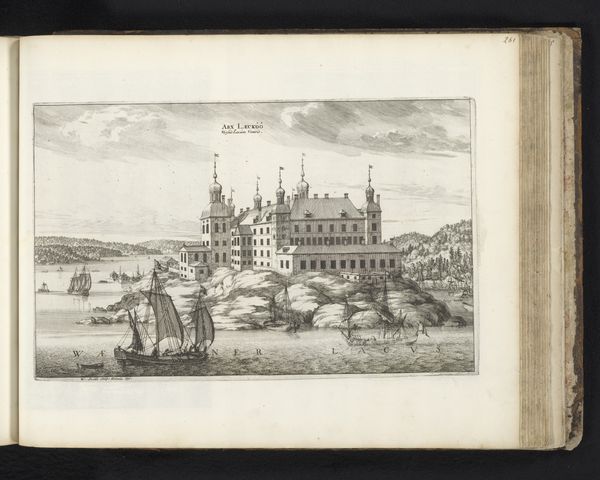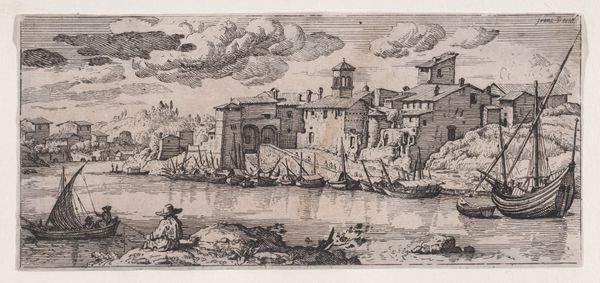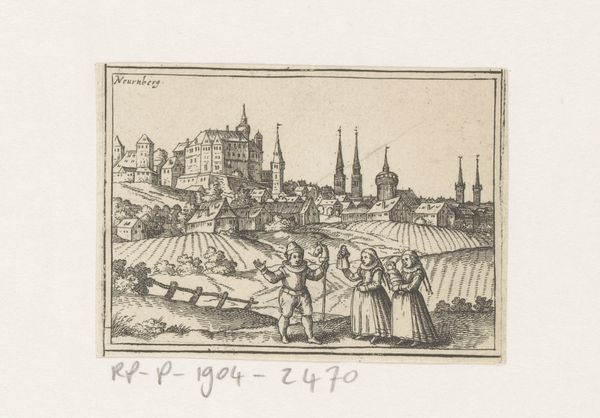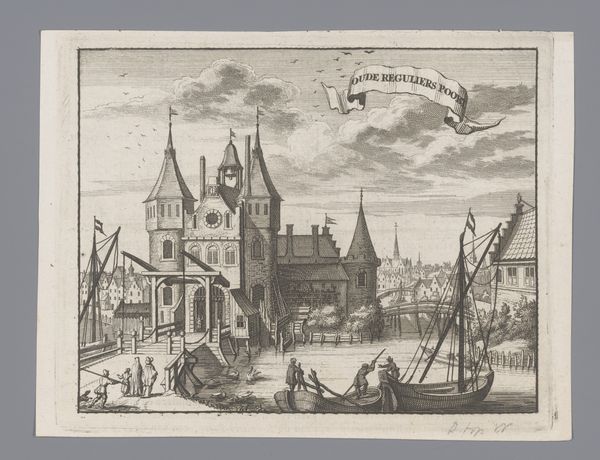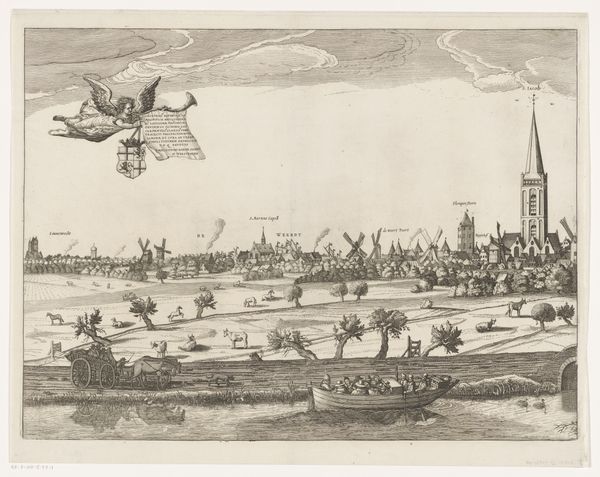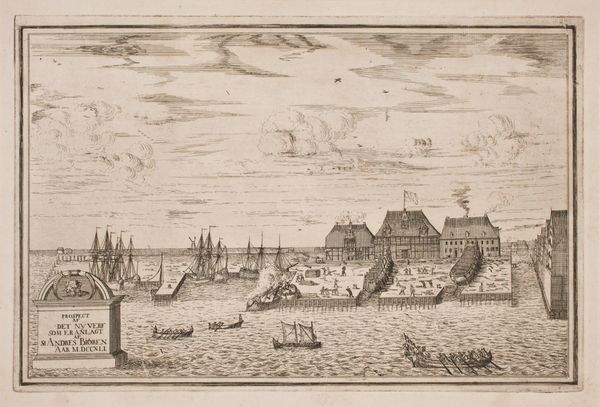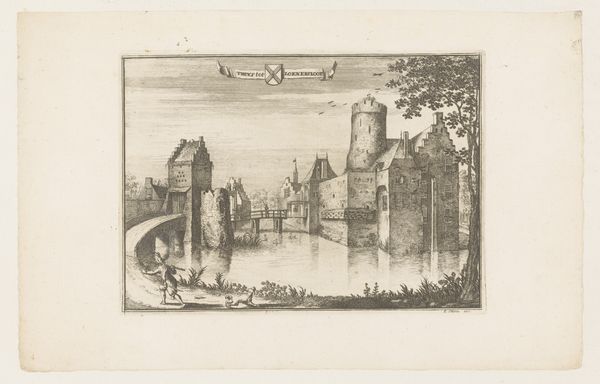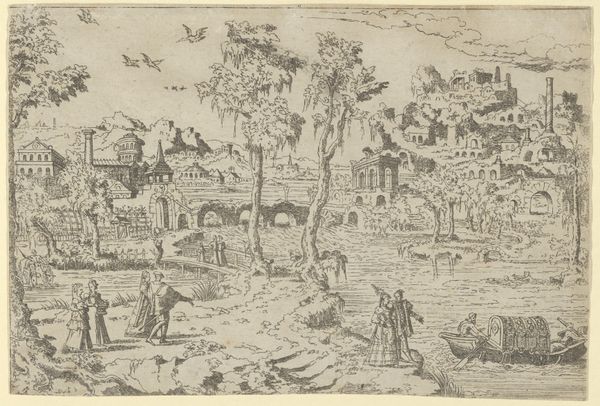
print, metal, engraving
#
dutch-golden-age
# print
#
metal
#
old engraving style
#
landscape
#
cityscape
#
engraving
Dimensions: height 119 mm, width 142 mm
Copyright: Rijks Museum: Open Domain
Curator: What an intriguing cityscape. Its geometric form, framed within that decorative border, presents an ordered reality. Editor: It feels bustling, though, even with the limitations of the medium. A vibrant snapshot of urban life. Let’s delve in. Curator: Certainly. We’re observing Jacobus Harrewijn’s "Gezicht op de Ooster Oude Hoofdpoort," or "View of the Eastern Old Head Gate," dating approximately from 1696 to 1730. An engraving using metal, now held at the Rijksmuseum. The emphasis on line and form are immediately apparent. Notice how each stroke delineates space and shape? Editor: Yes, but it’s more than just form, isn't it? It documents the intense social and commercial activity around the port. The gate itself wasn’t just a structure; it controlled trade, levied taxes… it was a point of power and a reflection of Rotterdam’s maritime importance. Curator: True, the visual language presents power, which is a language itself. Note the positioning of the "Oude Hoofd Poort" banner, hovering above the main structure, reinforcing the gate's dominance through graphic design. Editor: Precisely. It projects authority while also creating a sense of civic identity. And if you examine the foreground, those people aren’t just filling space, they're indicators of commerce and labor. Curator: Observe, also, the artist’s command of perspective. The lines converge, focusing the eye on the gate itself, drawing attention to this controlled entry. There’s a tension between the static architecture and implied movement. Editor: I wonder, looking at it now, what Rotterdam residents made of it. Was it intended as propaganda? Just a commodity? It definitely speaks to an urban audience, involved in trade and navigation. Curator: Well, in totality, the artwork speaks volumes about structural stability but, viewed through the lens of function and impact on its audience, the experience can expand significantly. Editor: It's amazing how this scene captures a moment frozen in time but resonating across centuries. Thank you. Curator: Agreed, our conversation helped reveal how form and history dance to deliver an experience that extends far beyond its aesthetic trappings.
Comments
No comments
Be the first to comment and join the conversation on the ultimate creative platform.
